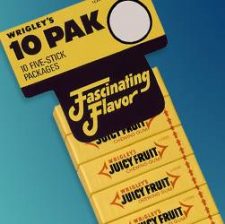June 28 is Monday Holiday Law Day
 Today is Monday Holiday Law Day. Call it the mother of all holidays about holidays, and Lyndon B. Johnson the father of the long weekend.
Today is Monday Holiday Law Day. Call it the mother of all holidays about holidays, and Lyndon B. Johnson the father of the long weekend.
On June 28, 1968, President Johnson signed a bill moving the official celebration of Washington’s Birthday, Memorial Day, and Veterans Day from their traditional dates to Mondays. The change was meant to give employees the opportunity to travel and spend more leisure time with their families, while making the workweek more efficient by removing the interruption of mid-week holidays.
Johnson also established a holiday to recognize Christopher Columbus and his voyage to the New World. According to the Congressional Research Service of the Library of Congress, “By commemorating Christopher Columbus’s remarkable voyage, the nation honored the courage and determination of generation after generation of immigrants seeking freedom and opportunity in America.”
The law did not merge Lincoln and Washington’s birthdays into a generic Presidents’ Day. This myth, perpetuated by sales hawking everything from automobiles to mattresses, may have its roots in an early draft that recommended it. Congress rejected it on the grounds that a holiday for all presidents would diminish George Washington’s historical significance. His birthday, February 22, 1732, is now officially celebrated on the third Monday in February.
Memorial Day began for the purpose of tending to the neglected graves of Union soldiers in Confederate cemeteries. (A similar tradition in the North was called Decoration Day.) Eventually, the two merged, and May 30 was chosen by a group of veterans because, according to an address by President Barack Obama, “it coincided with the time when flowers were in bloom.”
The holiday wasn’t officially named Memorial Day until 1967. The following year, President Johnson moved its observance to the last Monday in May. Some veterans have complained that moving the date to create a long weekend cheapens its meaning.
Columbus Day was scheduled for the second Monday in October. Some states had already enacted their own commemorative holidays occurring on October 12, the anniversary of Columbus’ landing in 1492; they were required to jettison them and conform to federal law.
Veterans Day, called Armistice Day until 1954, was observed on November 11 to mark the 11th hour of the 11th day of the 11th month of 1918, when Germany agreed to an armistice with the Allies, effectively ending World War I. President Johnson changed it to the fourth Monday in October. In 1975, Congress voted to revert to November 11 in recognition of the importance of the date. The law went into effect in 1978.
(The spelling of Veterans Day is no mistake: While the holiday is commonly printed as Veteran’s Day or Veterans’ Day, the United States Department of Veterans Affairs website states, “Veterans Day does not include an apostrophe but does include an ‘s’ at the end of ‘veterans’ because it is not a day that ‘belongs’ to veterans, it is a day for honoring all veterans.)
Happy Monday Holiday Law Day!

 Today is Happy Birthday to You Day. While this song may evoke pleasant memories for us, at one point, the right to sing it was so hotly contested that 6,000 Girl Scout camps received letters demanding the payment of royalty fees.
Today is Happy Birthday to You Day. While this song may evoke pleasant memories for us, at one point, the right to sing it was so hotly contested that 6,000 Girl Scout camps received letters demanding the payment of royalty fees.

 June 25, 2016: Today is the World Championship Rotary Tiller Race, the main event of the
June 25, 2016: Today is the World Championship Rotary Tiller Race, the main event of the